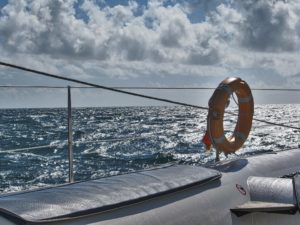 Over the last several weeks we have looked at problems for infrastructure decision makers when directions change – but before construction has started. However, since large scale projects can take a long time to construct many changes are likely to take place (and today much more so than in previous decades). If we were to stop and start again each time a new development comes on line, nothing would ever get done and budgets would explode. So do we accept that once a project starts construction, we ‘leave well enough alone’? Consider the following:
Over the last several weeks we have looked at problems for infrastructure decision makers when directions change – but before construction has started. However, since large scale projects can take a long time to construct many changes are likely to take place (and today much more so than in previous decades). If we were to stop and start again each time a new development comes on line, nothing would ever get done and budgets would explode. So do we accept that once a project starts construction, we ‘leave well enough alone’? Consider the following:
in 1950, Port Adelaide was rated as Australia’s third busiest port with berthing capacity for 41 ships and 6 kilometres of wharfs. The Greater Port Adelaide Plan was published that year with plans for the expansion of the port. A great deal of development then took place: reconstruction of wharfs, bulk handling facilities for coal and other bulk materials installed. Huge grain silos were constructed in 1963 and many storage sheds.
Then along came containerisation and made it all largely redundant as not only were the storage facilities not needed, the new container ships had a deeper drafts which required moving this shipping to the Outer Harbour because the Inner Harbour where the reconstruction had taken place, did not have the depth required. Compounding the misery for the port was another change that saw an increase in transportation by land rather than sea.
Looking back we always say ‘the signs were there’ – and no doubt they were, but how are we to tell ‘the signal from the noise’ to use Nate Silver’s phrase. Yes, the first container ship was launched in 1956 and it is hard to believe that this had not been a subject of much discussion in the navigation industry for years before its launch, possibly back to the time of the publication of the Greater Port Adelaide Plan but information was then not as easily accessible as it is today and it is also likely that the full potential of container shipping only gradually became apparent after that first voyage, i.e. while the reconstruction, much of which was to prove redundant, was going on.
So, our question for today is: Given the long lead times for planning and developing major infrastructure – and the likelihood of increasingly rapid change – what can we do to protect ourselves from such seismic changes, or even smaller, but nevertheless expensive, ones?
A second question is: How can we build in processes that make adaptation to new information easier?

Recent Comments